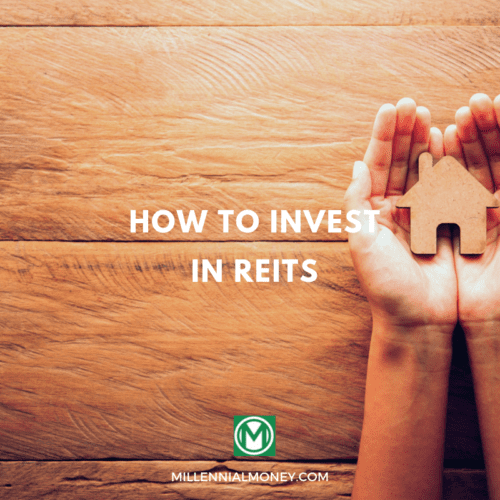Even by today’s standards, $1 million dollars is a large amount of money and a major benchmark for any investor. When you reach this milestone, it’s important to come up with a game plan to strategically invest $1 million dollars.
In this guide, we’ll walk through how to invest your million dollars, from setting financial goals to deciding which asset classes to invest in.
First Steps Before You Invest $1 Million Dollars
There are a few things you should consider before you begin investing, in order to protect your wealth.
1. Set Financial Goals
Before you build an investment portfolio that enables you to accumulate many millions, it’s crucial to establish your financial goals. Here are three factors to consider:
- Investment goals: Think about what type of lifestyle you want to live and consider what specific goals you’re investing for, like retirement, putting your kids through college, or buying a property. Decide how much your investments need to earn to meet these goals.
- Timeline: To determine your investment horizon—the amount of time you’ll hold onto your investments before you cash out—decide what age you want to reach your investment goals by. Your investment timeline will determine what types of assets you invest in.
- Risk tolerance: Risk tolerance goes hand-in-hand with your timeline. The longer you have to invest, the riskier you can afford to be, and vice versa. Decide how comfortable you are with market volatility to decide on investment allocations.
2. Consider Working with a Financial Advisor
Working with a financial advisor can be invaluable when you’re investing $1 million. These advisors are experts at financial planning, and they work closely with you to pinpoint your financial goals and risk tolerance, then invest on your behalf.
They can also provide you with tools and resources to help you learn the ropes of investing and make informed decisions about your financial future.
I’m a big fan of J.P. Morgan’s Personal Advisors Service. Advisory fees for this service are 0.40%-0.60%, depending on your assets.
A team of J.P. Morgan advisors will mold a financial plan around your goals, then match you with expertly-built portfolios to invest in. They’ll also automatically rebalance your portfolio when the market shifts.
This service is a great option if you want ongoing access to financial advice. You’ll get annual check-ins with your advisors and can schedule video and phone calls for advice and support.
And if you’re a Chase bank member, you get the added benefit of managing all of your investing, banking, and lending accounts in one place using the Chase Mobile app.
INVESTMENT AND INSURANCE PRODUCTS ARE: NOT A DEPOSIT • NOT FDIC INSURED • NO BANK GUARANTEE • MAY LOSE VALUE3. Build an Emergency Fund
No matter how wealthy you are, it’s wise to have an emergency fund to cover three to eight months’ worth of living expenses.
This should include basic needs like rent or mortgage payments, utilities, and groceries. Depending on your livelihood, you may also want to factor in job security, too.
Keep your emergency fund somewhere that provides access and growth, like a high-yield savings account. You could allocate your emergency savings into different investments, putting the first three months in a fluid HYSA account, the next three in a short-term CD, and the rest in a six-month bond.
Learn More:
4. Pay Off High-Interest Debt
You don’t have to pay off every cent of debt to start investing, but it’s a good idea to pay off your high-interest debt first.
If you’re carrying a car loan, personal loan, or credit card debt with high interest, it’s wise to pay it off before you invest. That’ll offer the highest return on investment in the long run since the money you’ll save in interest is likely to beat potential returns on your investments.
Once you’ve funded your emergency account, prioritize paying off high-interest loans then work your way down until you’re debt-free.
5. Prioritize Retirement Contributions
Before you decide which assets to invest in, make it a priority to invest in your retirement plan.
If your employer offers a 401(k) or similar retirement account, you can invest as much as $22,500 per the IRS’ 2023 contribution limit. If you’re 50 or older, you can contribute an extra $7,500 of catchup contributions.
For most people, maxing out these plan contributions is a smart move. If your employer offers to match your contributions, you should at least contribute enough to get the full match. It’s also wise to contribute to an IRA (individual retirement account).
Learn More:
How to Invest $1 Million Dollars
There are several types of investments to choose from, with varying levels of risk and reward.
Here are the 7 best ways to invest $1 million dollars:
- Stocks and Bonds
- ETFs and Mutual Funds
- Real Estate
- Life Insurance
- P2P Lending
- New Business
- CDs or High-Yield Savings
1. Stocks and Bonds
Stocks are individual shares of a publicly traded corporation. Buying shares of a company will help you accumulate more ownership. They can play a valuable role in a diversified portfolio.
Stocks are highly volatile, as their prices fluctuate depending on how companies perform. They can come with a higher risk and potential for higher returns. Remember to choose carefully when buying stocks, too, as you’ll have to pay taxes on any gains when you sell them.
A bond is an instrument of debt that essentially acts as a loan to the borrower. When a borrower issues a bond, they promise to pay you back with varying interest rates. There are multiple types of bonds that range in value, including municipal, corporate, and U.S. treasury bonds.
Bonds are generally considered secure. But keep in mind that you can still lose money on a bond if you sell it before it matures. So before you invest in one, make sure that you’re comfortable holding it.
Learn More:
INVESTMENT AND INSURANCE PRODUCTS ARE: NOT A DEPOSIT • NOT FDIC INSURED • NO BANK GUARANTEE • MAY LOSE VALUE2. Mutual Funds and ETFs
A mutual fund is an account that pulls money from multiple investments, in order to purchase securities.
One of the biggest benefits that mutual funds will provide is market diversification. Mutual funds tend to offer conservative, but steady growth over time, making them an excellent long-term investment. Just make sure to watch out for heavy fees.
Exchange-traded funds (ETFs ) are collections of securities, including U.S. stock, with prices that fluctuate based on supply and demand. Some of the most common types of ETFs include niche passive equity, diversified passive equity, and active equity.
Learn More:
3. Real Estate
Real estate can be an incredible investment. Unlike buying a car, which will lose value as soon as it leaves the lot, a piece of property can increase in value.
Here are a few strategies for investing money in real estate:
- Flipping: When people flip houses, they buy them at a reduced rate, fix them up, and sell them above market value.
- REIT: For a hands-off approach to real estate projects, look into a real estate investment trust (REIT). REITs can generate strong dividend yields, along with healthy long-term capital appreciation opportunities.
- Rental properties: Consider investing in a rental property in a populated area where you can rent it year-round for a steady stream of income. If renters are paying your mortgage each month, that’s like putting money in your pocket.
- Crowdfunding: Real estate crowdfunding is a peer-to-peer lending option that allows investors to join forces to invest in properties, giving them a percentage of the income they generate.
I’ve been investing with Fundrise since 2017. Disclosure: when you sign up with my link, I earn a commission. All opinions are my own.
4. Life Insurance
If you have loved ones, who depend on you financially or you have transferable debts, you need life insurance. Get life insurance while you’re young and you could wind up paying a small premium of less than $100 per month.
Certain life insurance policies can have tax-shielding benefits, much like a 401k or an IRA. In other words, you can choose to pay a bit more and pump money into an account to accrue over time, allowing you to access the money while you are still living. In addition, the account will also have a nice payout for your family upon your eventual demise.
5. P2P Lending
You don’t have to be a billionaire to help fund other companies. Businesses often need small loans to help pay the bills, and you can help by using peer-to-peer lending services like Prosper, Upstart, and LendingClub. Using lending apps can provide a variety of metrics, helping you determine whether a borrower is trustworthy or not.
Just like other types of alternative investments, P2P lending can still be classified as very high-risk. However, you can produce modest returns on your income while also helping fund other organizations if you choose carefully.
6. New Business
Having $1 million at your disposal could also give you the opportunity to start your own small business. If you have a burgeoning idea for a business that you’ve always wanted to explore, you could use some of your funds to pursue that dream.
Of course, starting a business can pose a high level of risk since there are a lot of unknowns. Another slightly safer option is to buy into an existing business with a bit more of a track record of success under its belt.
7. CDs, MMAs, and High-Yield Savings
Sometimes, you need to stash some of your funds in a safe spot like a certificate of deposit (CD), money market account (MMA), or high-yield savings account (HYSA).
Each of these options offers safety and liquidity with a small return, although you may be penalized from withdrawing a CD’s funds early.
Just make sure to do your homework by comparing rates, as some accounts have far more competitive rates of return than others do.
If you plan to invest some money in a savings account, look into online banks. These institutions tend to offer fewer fees and more competitive APY than traditional banks and credit unions.
Frequently Asked Questions
Is artwork a solid investment strategy?
Artwork can be a great investment vehicle because it’s shielded from the outside market. A painting, won’t decrease in value with the surrounding market. It has a value of its own. However, artwork can also increase in value over time.
If you invest in art, you’ll want to buy insurance and go through the proper channels to reduce the likelihood of buying a fake item. Buying art can be risky.
If you don’t want to own the paintings yourself and also want to ensure that the art you’re investing in is real, there are a number of emerging crowdfunding art investment companies like Masterworks, where you can invest in a share of a painting with others to distribute your risk.
Should I donate to charity?
Donating to charity has two great advantages. First and foremost, you’ll be helping others. And second, there are potential tax-free advantages if you donate to the right places. Just be smart about how much you give, as you don’t want to offer beyond your means.
Is Bitcoin a good investment?
Bitcoin is extremely risky but has a massive potential payout. The market is also impacted by high volatility, so if you decide to invest in Bitcoin you should be very careful about how you go about it.
Is a million dollars a lot of money?
The short answer is that it depends on a lot of factors. This includes your lifestyle and spending habits, long term goals, and the amount of credit card debt that you have.
By all accounts, a million dollars is a heck of a lot of money. But in some ways, it’s not that much — especially for young people. The trick is to look at $1 million as a launchpad and seek ways of growing it to accumulate even more wealth.
How Should You Invest $1 Million Dollars?
If there is one piece of financial advice that I can give you, it’s that accruing $1 million — however you do it — is just the beginning of your financial journey. It’s what you do with the money after you obtain it that really matters. If you make the right decisions, you could wind up earning a lot more over the course of your life, setting you and your loved ones up for considerable success.
However, one million dollars can go very quickly too. By investing your money, you can protect your net worth and make your money go a lot further. And protecting your money can provide excellent peace of mind.
J.P. Morgan Wealth Management is a business of JPMorgan Chase & Co., which offers investment products and services through J.P. Morgan Securities LLC (“J.P. Morgan”), a registered broker dealer and investment adviser, member FINRA and SIPC. Millennial Money is a publisher of J.P. Morgan, (“Publisher”). The Publisher will receive compensation from J.P. Morgan if you provide contact details to speak with a J.P. Morgan representative. Compensation paid to the Publisher will be up to $500 per completed contact form. Compensation provides an incentive for the Publisher to endorse J.P. Morgan and therefore information, opinions, or referrals are subject to bias. J.P. Morgan and the Publisher are not under common ownership or otherwise related entities, and each are responsible for their own obligations. Investing involves market risk, including possible loss of principal, and there is no guarantee that investment objectives will be achieved.





Read 1 comment or add your own
Read Comments